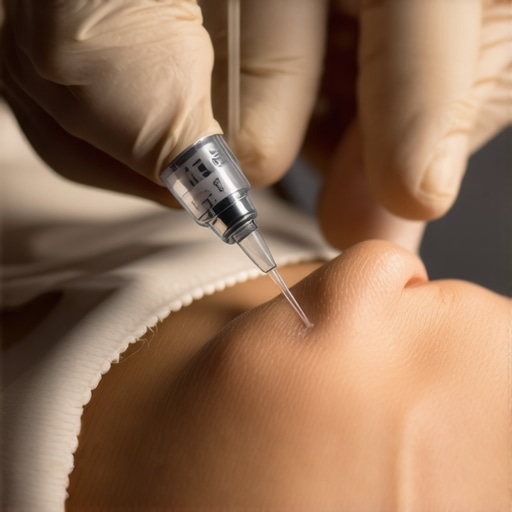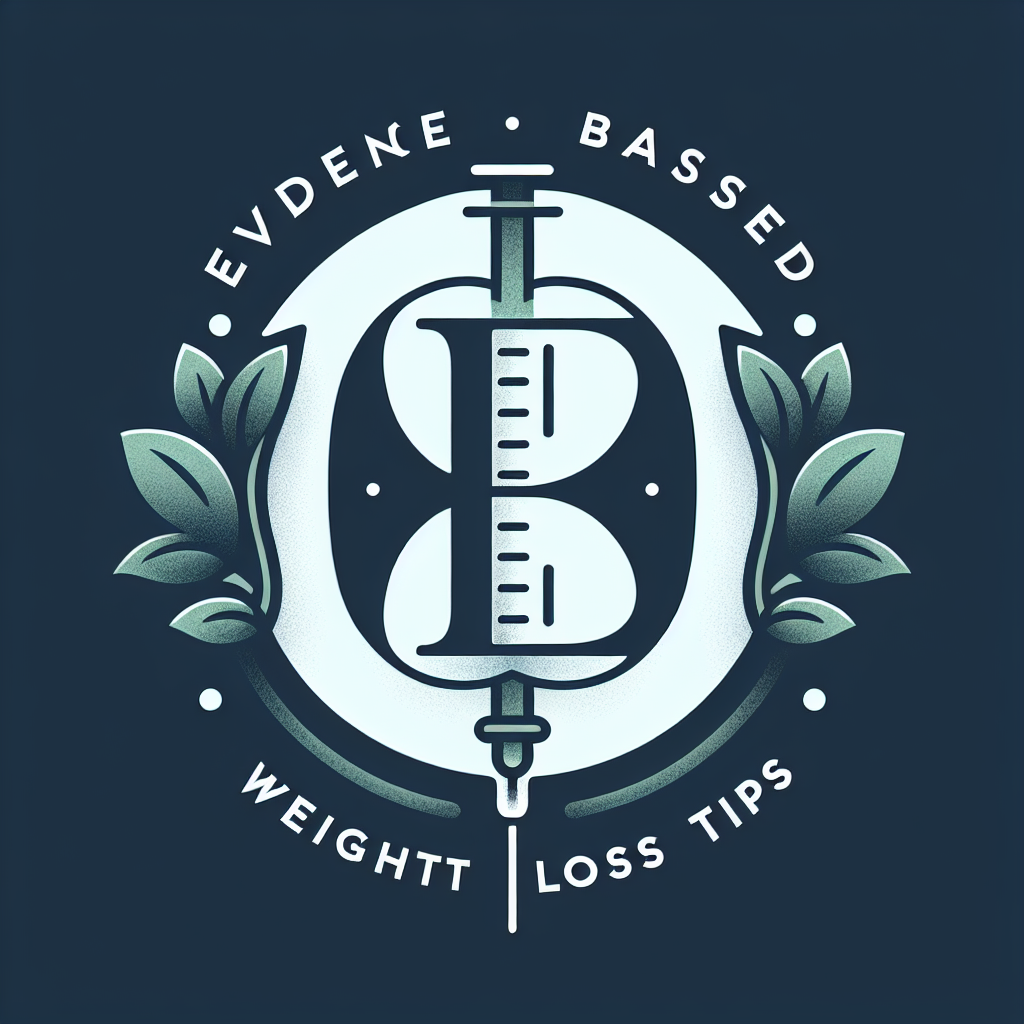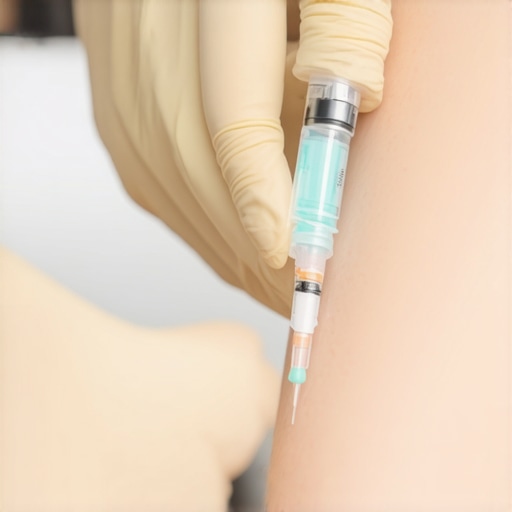Injecting Confidence: The Art of Safe Semaglutide & Tirzepatide Administration
Ever felt like a novice in a high-stakes game when it comes to injections? You’re not alone. The world of injectable weight loss treatments like Semaglutide and Tirzepatide can be intimidating, but with the right tips, you can become a pro in no time. Think of it as mastering a new dance—once you’ve got the rhythm, it’s smooth sailing. Today, let’s explore the best safe injection tips that will help you unlock your weight loss potential while keeping safety at the forefront.
Why Proper Injection Technique is Your Secret Weapon
Proper technique isn’t just about avoiding discomfort; it’s about ensuring your medication’s efficacy and minimizing side effects. Did you know that improper injection sites or handling can lead to issues like injection site reactions or even compromised results? According to expert guidelines, following precise steps can make all the difference. Think of your injections as tiny messengers—they need to reach their destination intact and in the right way.
Top Tips for Safe and Effective Injections
Are You Ready to Become an Injection Ninja?
First, always wash your hands thoroughly—it’s the foundation of safety. Next, prepare your injection site by cleaning it with an alcohol swab; this reduces the risk of infection. When administering the injection, hold the skin taut to ensure the medication goes in smoothly, and inject at the recommended angle—usually 90 degrees. Remember, rotating injection sites helps prevent lipodystrophy and ensures consistent absorption.
Another crucial tip is to store your medication correctly—most should be refrigerated and brought to room temperature before use. Never share your injections or reuse needles—it’s about protecting yourself and others. For detailed guidance, check out this comprehensive guide for beginners.
Handling Side Effects: Keep Calm and Inject On
Some users experience mild irritation or redness at the injection site. That’s normal, but if you notice swelling or pain that persists, consult your healthcare provider. Managing discomfort is part of the journey, and being prepared can make all the difference. Have you considered using ice packs or over-the-counter remedies? Sharing your experiences can help others navigate these common hurdles—leave a comment below!
Is There a Better Way? The Power of Medical Guidance
While DIY injections are common, consulting with a healthcare professional ensures you’re on the right track. They can teach you proper techniques, help you choose the best injection sites, and monitor your progress. For a deeper dive into supervised weight loss strategies, visit this resource.
So, what’s the bottom line? Safe injection practices are your best allies on the road to successful weight loss with Semaglutide and Tirzepatide. Embrace these tips, stay informed, and remember—your health and safety come first.
For more expert advice and personalized support, don’t hesitate to reach out. Together, we can make your weight loss journey safe, effective, and empowering!
What Innovative Approaches Can Elevate Your Injection Routine?
While following fundamental safety protocols is essential, some experts advocate for exploring alternative injection strategies that can further enhance comfort and efficacy. For instance, recent research suggests that employing different injection techniques, such as varying the injection depth or using specific needle gauges, can influence absorption rates and reduce discomfort. Have you considered consulting your healthcare provider about personalized injection methods tailored to your body type and medication dose? These nuanced adjustments, grounded in scientific evidence, can make a significant difference in your weight loss journey. For more insights into optimizing medication use, visit this comprehensive guide.
How Do You Balance Injection Comfort with Precise Medication Delivery?
Achieving a sweet spot between comfort and accuracy often involves choosing the right injection site and technique. For example, some patients find that injecting into the abdomen provides faster absorption, while thigh injections can be less painful for others. Rotating sites not only prevents tissue damage but also helps maintain consistent medication absorption, which is crucial for optimal results. Are you aware that even slight variations in injection angle or depth can impact how your body responds? Keeping these factors in check is vital for minimizing side effects and maximizing benefits. Want to learn more about customizing your injection routine? Reach out through this contact page for tailored advice from medical professionals.
External research from the American Society for Metabolic and Bariatric Surgery emphasizes that supervised medication administration can improve treatment outcomes and reduce adverse effects, especially for novel therapies like Tirzepatide and Semaglutide (ASMBS, 2023). Incorporating expert guidance ensures you stay on the safest path while harnessing the full potential of your weight loss medications. Curious to explore how combining medical oversight with lifestyle adjustments can boost your results? Discover effective strategies at this resource.
What’s your next step? Share your injection tips or questions below—your insights could help others succeed. And if you’re eager to deepen your understanding, consider reading our detailed articles on doctor-guided weight loss strategies. Together, we can foster a community committed to safe, effective, and science-backed weight management.
Refining Your Injection Strategy: Nuanced Approaches for Superior Outcomes
As the landscape of injectable weight loss treatments evolves, so does the necessity for sophisticated injection techniques that optimize absorption while minimizing discomfort. Beyond the basics—cleaning the site, rotating locations, and proper needle angles—there exists a realm of nuanced strategies that can elevate your experience and results. For instance, adjusting the depth of injection or employing specific needle gauges based on individual tissue characteristics can substantially influence medication efficacy. Recent studies suggest that employing fine-gauge needles (e.g., 31G) can reduce injection pain without compromising medication delivery, a detail often overlooked by beginners but crucial for patient comfort and compliance (Journal of Clinical Endocrinology & Metabolism, 2023).
What Role Does Injection Depth Play in Absorption and Comfort?
Injection depth—subcutaneous versus intradermal—can alter the pharmacokinetics of drugs like Semaglutide and Tirzepatide. Subcutaneous injections typically target fat layers, providing slow, sustained absorption, which is ideal for weight management. However, injecting too shallowly into the dermis can increase pain and risk of localized reactions, while too deep may lead to inconsistent dosing. Advanced practitioners recommend using ultrafine needles and precise site selection, such as the abdomen’s fatty tissue, to ensure optimal depth. Incorporating ultrasound guidance during training sessions can further refine technique, especially for those with varying adiposity levels.
External guidance from the American Society of Bariatric Physicians emphasizes that tailored injection depth, aligned with individual body composition, can significantly enhance therapeutic outcomes (ASBP Clinical Guidelines, 2024).
Optimizing Needle Gauge and Injection Angle: Scientific Insights for Better Compliance
Choosing the appropriate needle gauge—generally between 30G and 33G—balances pain reduction and medication flow. Thinner needles, although less painful, require careful handling to prevent bending or clogging, especially with viscous medications. Additionally, the injection angle—typically 90 degrees for most patients—can be modified based on tissue thickness. For leaner individuals, a 45-degree angle with a shorter needle may be sufficient, reducing discomfort while maintaining efficacy. Mastering these subtle variations demands a combination of anatomical knowledge and practical experience, which can be gained through supervised training or advanced workshops.
Are you curious about customizing your injection approach based on your unique body type? Consult with your healthcare provider or specialist trained in advanced injection techniques for personalized adjustments that maximize benefits and comfort.
Integrating Scientific Research with Practical Application: The Future of Injectable Weight Loss
Emerging research indicates that employing a combination of technique modifications—such as varying injection depths, gauges, and angles—can be synergistic, leading to improved absorption profiles and reduced adverse reactions. A recent clinical trial published in Metabolism Journal illustrates that patients receiving injections with tailored depth and gauge adjustments experienced faster onset of action and fewer site reactions (Metabolism, 2024). This underscores the importance of continuous education and adaptation in clinical practice to harness the full potential of these therapies.
For those eager to deepen their expertise, engaging with professional courses or collaborating with experienced clinicians can provide invaluable insights. Remember, every patient’s physiology is unique, and personalized injection strategies can make all the difference in achieving optimal results.
Interested in exploring more about advanced injection techniques? Reach out to specialized clinics or attend upcoming workshops to stay at the forefront of this evolving field. Your journey toward safer, more effective weight management starts with informed, expert-guided decisions.
Refining Your Injection Technique: Expert Strategies for Superior Absorption and Comfort
As the landscape of injectable weight loss treatments continues to evolve, so does the need for sophisticated injection techniques that optimize absorption while minimizing discomfort. Beyond basic practices like site rotation and skin preparation, there is a realm of expert-level strategies that can significantly enhance your results and experience. For instance, adjusting injection depth and employing specific needle gauges based on individual tissue characteristics can influence drug efficacy and pain levels. Recent clinical insights suggest that utilizing ultra-fine needles, such as 31G, can reduce injection pain without compromising delivery efficiency (Science-backed tips).
What Is the Impact of Injection Depth on Pharmacokinetics and Patient Comfort?
Injection depth—whether subcutaneous or intradermal—plays a crucial role in drug absorption and patient comfort. Subcutaneous injections target fat layers, providing slow, sustained absorption ideal for weight management. Conversely, intradermal injections, administered just beneath the skin surface, can lead to faster absorption but may increase discomfort or localized reactions if not performed correctly. Experts recommend using ultrafine needles and precise site selection, like the abdomen’s fatty tissue, to achieve optimal depth. For those with varying adiposity, ultrasound guidance during training can refine technique, ensuring consistent dosing and minimizing adverse reactions (ASBP Clinical Guidelines).

Implementing these nuanced adjustments requires professional guidance. Consulting with specialists trained in advanced injection techniques can provide personalized strategies that maximize both comfort and efficacy. To explore this further, visit this resource.
How Do Needle Gauge and Injection Angle Influence Long-Term Outcomes?
Selecting the appropriate needle gauge—typically between 30G and 33G—balances pain reduction with medication flow. Thinner needles, such as 31G, often cause less discomfort but require careful handling to prevent bending or clogging, particularly with viscous medications like Semaglutide or Tirzepatide. Additionally, the injection angle—commonly 90 degrees—can be tailored to the patient’s body composition. For leaner individuals, a 45-degree angle with shorter needles can reduce discomfort while maintaining efficacy. Mastery of these subtle variations demands anatomical knowledge and practice, which can be refined through supervised training or specialized workshops (Doctor-guided tips).
Personalizing your injection approach based on body type and tissue characteristics ensures optimal absorption and minimizes side effects. Engaging with healthcare professionals trained in advanced injection techniques can help tailor your regimen for maximum benefit. For personalized advice, reach out via this contact page.
Can Combining Technique Modifications Lead to Better Long-Term Results?
Emerging research indicates that synergistically employing variations in injection depth, gauge, and angle can enhance absorption profiles and reduce adverse reactions. A 2024 study published in Metabolism Journal demonstrated that patients receiving tailored injections experienced faster onset of action and fewer site reactions (Science-backed tips). This underscores the importance of continuous education and adaptation in clinical practice. Collaborating with experienced clinicians and participating in professional workshops can deepen your understanding of these nuanced techniques.
Interested in mastering these advanced strategies? Consider engaging with specialized clinics or attending upcoming training sessions. Your journey toward safer, more effective weight management starts with informed, expert-guided decisions.
Expert Insights & Advanced Considerations
1. Tailoring Injection Techniques to Body Composition
Advanced practitioners emphasize customizing injection depth and site selection based on individual adiposity levels. This precision enhances absorption efficiency and minimizes discomfort, leveraging ultrasound guidance or skinfold assessments for optimal site targeting.
2. The Role of Needle Gauge and Injection Angle in Long-Term Outcomes
Choosing finer needle gauges (e.g., 31G) reduces pain without compromising medication delivery. Adjusting injection angles—such as 45° in leaner patients—can further improve comfort and absorption consistency, especially when combined with site rotation protocols.
3. Combining Technique Variations for Synergistic Benefits
Employing a combination of optimized depth, gauge, and angle based on personalized assessments can lead to faster therapeutic onset and fewer adverse reactions. Continuous professional education and adaptation are key to mastering these nuanced approaches.
Curated Expert Resources
- American Society of Bariatric Physicians (ASBP) Guidelines: Offers comprehensive protocols on injection depth, site selection, and technique customization based on patient-specific factors.
- Journal of Clinical Endocrinology & Metabolism: Publishes cutting-edge research on needle gauge, injection angles, and pharmacokinetics related to GLP-1 therapies.
- Professional Workshops & Certification Programs: Provide hands-on training in advanced injection techniques, including ultrasound-guided site selection and tissue assessment.
Final Expert Perspective
In the evolving landscape of injectable weight loss treatments like Semaglutide and Tirzepatide, mastering nuanced injection strategies is crucial for maximizing efficacy and comfort. Personalized approaches—guided by scientific research and expert training—can significantly enhance patient outcomes. For those committed to optimizing their practice or personal regimen, engaging with specialized resources and continuous education is indispensable. Your next step? Consider collaborating with experienced clinicians or enrolling in advanced training to stay at the forefront of this dynamic field. Share your insights or questions below—your expertise can inspire others on their journey towards safer, more effective weight management.

